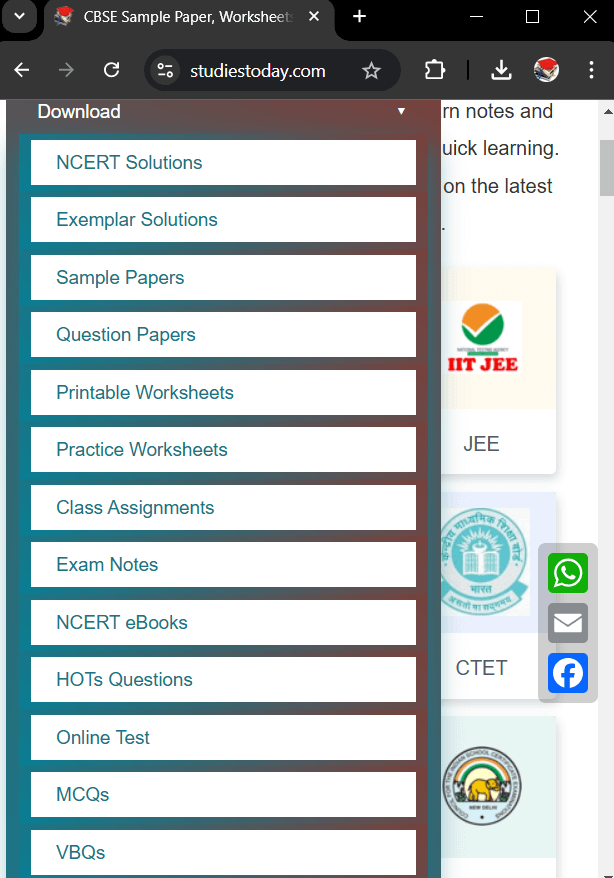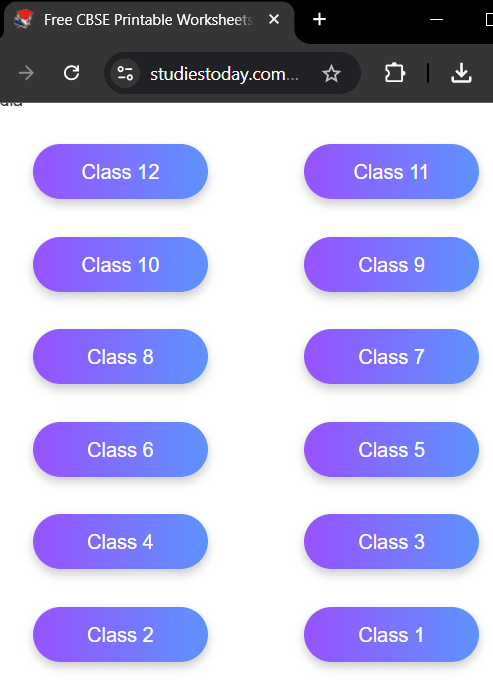Download free printable assignments for CBSE Class 12 History with important chapter-wise questions, students must practice NCERT Class 12 History assignments, question booklets, workbooks and topic-wise test papers with solutions as it will help them in the revision of important and difficult concepts in Class 12 History. Class Assignment for Class 12 History, printable worksheets and practice tests have been prepared as per the pattern of worksheets in various schools and topics given in NCERT textbook. Class 12 History Chapter tests for all important topics covered which can come in your school exams, download in PDF. Click here to access Kendriya Vidyalaya Class 12 History assignments and test sheets. You can download free printable assignments for practice, topic-wise question banks for all chapters. Access free CBSE NCERT printable assignments for Class 12 History with solutions prepared by expert teachers. Free PDF download of Class 12 History assignments with answers will help in scoring more marks in your school tests and examinations, click links below for assignments with important questions for Class 12 History chapter wise with solutions
Class 12 History Assignments Pdf
We have provided below the largest collection of CBSE NCERT Assignment for Class 12 History which can be downloaded by you for free. These free assignments cover all Class 12 History important questions and answers and have been designed based on the latest CBSE NCERT Books and Syllabus. You can click on the links below to download the chapter-wise test papers for Class 12 History. CBSE Assignment for Class 12 History will help Class 12 History students to prepare properly for the upcoming examinations.
Chapter Wise Class 12 History Assignments in Pdf
| CBSE Class 12 History Map Work Hindi Assignment Set A |
| CBSE Class 12 History Map Work Hindi Assignment Set B |
| CBSE Class 12 History Bricks Beads and Bones the Harappan Civilization Assignment |
| CBSE Class 12 History Kings Farmers And Towns Early States And Economies Assignment |
| CBSE Class 12 History Kinship Caste and Class Early Societies Assignment |
| CBSE Class 12 History Thinkers Beliefs and Buildings Cultural Development Assignment |
| CBSE Class 12 History Medieval India Hindi Assignment Set A |
| CBSE Class 12 History Medieval India Hindi Assignment Set B |
| CBSE Class 12 History Through the Eyes of Travelers Assignment |
| CBSE Class 12 History Bhakti Sufi Traditions Changes in Religious Beliefs Assignment |
| CBSE Class 12 History Imperial Capital Vijaynagar Assignment |
| CBSE Class 12 History Peasants Zamindaris and the State Assignment |
| CBSE Class 12 History Rebels and The Raj Revolt of 1857 and its Representations Assignment |
| CBSE Class 12 History Colonialism and the Countryside Exploring Official Archives Assignment |
| CBSE Class 12 History Rebels And The Raj Assignment |
| CBSE Class 12 History Colonial Cities Urbanization Planning and Architecture Assignment |
| CBSE Class 12 History Mahatma Gandhi and the Nationalist Movement Assignment |
| CBSE Class 12 History Understanding Partitions Politics Memories Experiences Assignment |
| CBSE Class 12 History Framing the Constitution Assignment |
You can download free Pdf assignments for CBSE Class 12 History from StudiesToday.com
The Class 12 History Assignments have been designed based on latest CBSE syllabus for Class 12 History issued for the current academic year
Yes, These printable assignments for Class 12 History are free to download and print
All topics and chapters given in History Class 12 Book for the current academic year have been covered in the given assignments
No, all Printable Assignments for Class 12 History have been given for free and can be downloaded in Pdf format
Just click on the View or Download button below, then another window with the Pdf will be visible, just click on the Pdf icon to download the free assignments for Class 12 History
Yes, apart from History you can download free assignments for all subjects in Class 12
Our team of expert teachers at studiestoday.com have provided all answers for the practice questions which have been given in Class 12 History assignments




